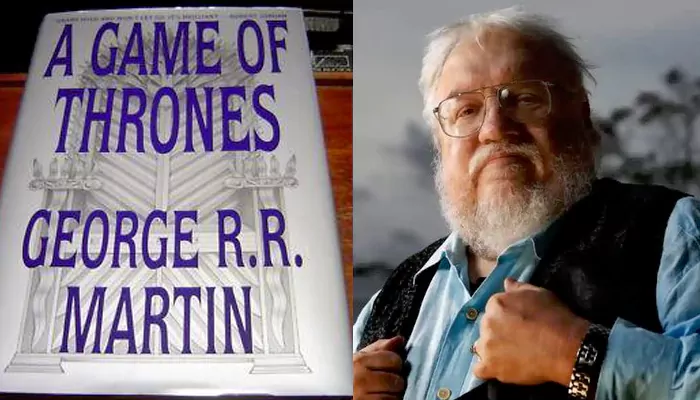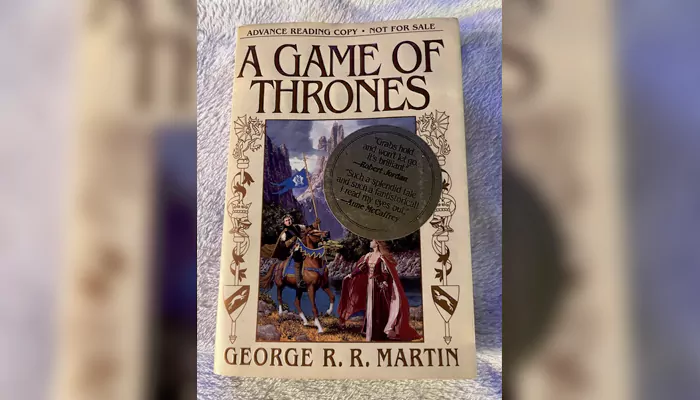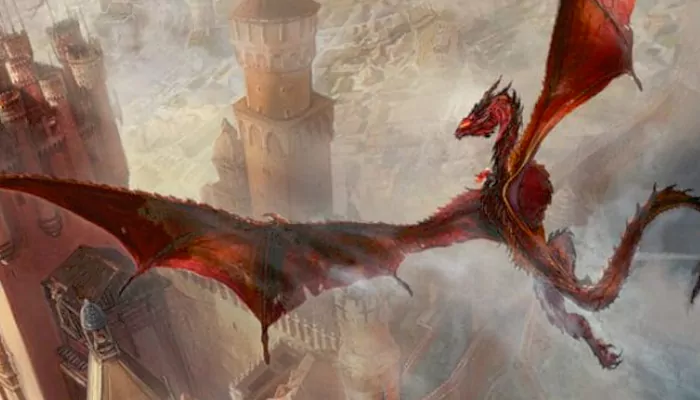
'A Game of Thrones' is the first novel in George R. R. Martin's fantasy series, 'A Song of Ice and Fire'.
If you were hooked on 'Game of Thrones' until season 8 made you question your life choices, you’re definitely not alone. But the silver lining is that the books are far more satisfying. And it all began with 'A Game of Thrones', the first novel in George R.R. Martin’s epic saga. Published exactly 29 years ago today, on August 6, 1996, this book launched a fantasy series and sparked a cultural phenomenon. But there’s something even die-hard fans might not know: 'A Game of Thrones' was never meant to be a novel at all.
So, on its 29th anniversary, let’s dive into the fascinating origin of the story that changed fantasy fiction forever.
It was 1991, and Martin was still deep in the world of television, known for writing and producing episodes of 'The Twilight Zone' and 'Beauty and the Beast'. He had returned to prose fiction as a kind of creative relief, an escape from the budget constraints and executive notes of Hollywood. At the time, he was working on a science fiction novel called 'Avalon' when, seemingly out of nowhere, an image came to his mind: a young boy watching an execution in the snow, and soon after, discovering a litter of direwolf pups. He later told The Guardian, “It just came to me so strongly and vividly that I knew I had to write it,” adding, “I sat down and in three days, I had the scene almost as it appears in the book.”
He assumed it would be a short story, maybe something to publish in a magazine. But the scene refused to stay small. The characters multiplied, and the world they lived in demanded more space than a few thousand words could contain. Martin later admitted, “When I began, I didn’t know what the hell I had. I thought it might be a short story… Then I started exploring these families, and the world started coming alive.”

That original chapter, told from young Bran Stark’s perspective, became the heart of what would evolve into 'A Song of Ice and Fire', spanning thousands of pages, dozens of point-of-view characters, and a web of political and personal intrigue unmatched in contemporary fantasy.
While Martin returned to his Hollywood obligations, the Westerosi saga gnawed at his imagination. The noble house of Stark, the ambitious Lannisters, and the icy dread of the Others beyond the Wall took root and refused to let go. He said, “This Ice and Fire thing wouldn’t leave my head. I kept thinking about it.”
One chapter became a dozen. Then a hundred. And the narrative blossomed into an intricate lattice of alliances, betrayals, and blood feuds. Martin soon realized he wasn’t writing a standalone novel, but building a universe.
By the mid-1990s, he had mapped out an ambitious seven-book arc. 'A Game of Thrones' would be the beginning. What followed ('A Clash of Kings', 'A Storm of Swords', 'A Feast for Crows', and 'A Dance with Dragons') only deepened the mythos. And though the long-promised 'The Winds of Winter' and 'A Dream of Spring' are still works in progress, the cultural weight of the series has already left a mark.

You might assume a fantasy world as layered and detailed as Westeros must have been meticulously designed in advance. But Martin’s process is anything but schematic. He has famously called himself a “gardener,” not an “architect.” He simply plants seeds and lets them grow. As he once explained, “I don’t build the world first, then write in it. I just write the story, and then put it together.”
His first map of Westeros was sketched in about thirty minutes. From that rough outline, Martin filled in details as the story required them - family trees, regional dialects, heraldry, histories going back thousands of years. Yet the richness never feels ornamental. These elements arise naturally from character and conflict, making Westeros feel less like a fantasy land and more like a distant country you could study, chart, and perhaps get lost in.

This improvisational yet immersive method helps explain why the series has such depth. It doesn’t read like a world engineered to impress. It reads like a place that’s lived in and remembered unevenly, much like our own.
By the time HBO came calling in the late 2000s, Martin’s books had already cultivated a devoted readership. But the television adaptation of 'Game of Thrones', which premiered in 2011, launched the story into a different orbit entirely.

The show brought Martin’s vision to millions, some of whom had never cracked open the novels. For eight seasons, 'Game of Thrones' dominated global conversation, with its characters being dissected on podcasts, its twists discussed in classrooms, and its deaths mourned like those of real people. Spin-offs, fan theories, cosplay empires, and academic studies followed.
While Martin’s readers continue to await the final chapters, the story he began in a moment of inspiration has already reshaped how we think about fantasy, and especially the blurry line between heroism and power. In hindsight, it was never “just” a short story. But the fact that Martin once believed it was and that he nearly stopped at one scene makes its evolution all the more remarkable.